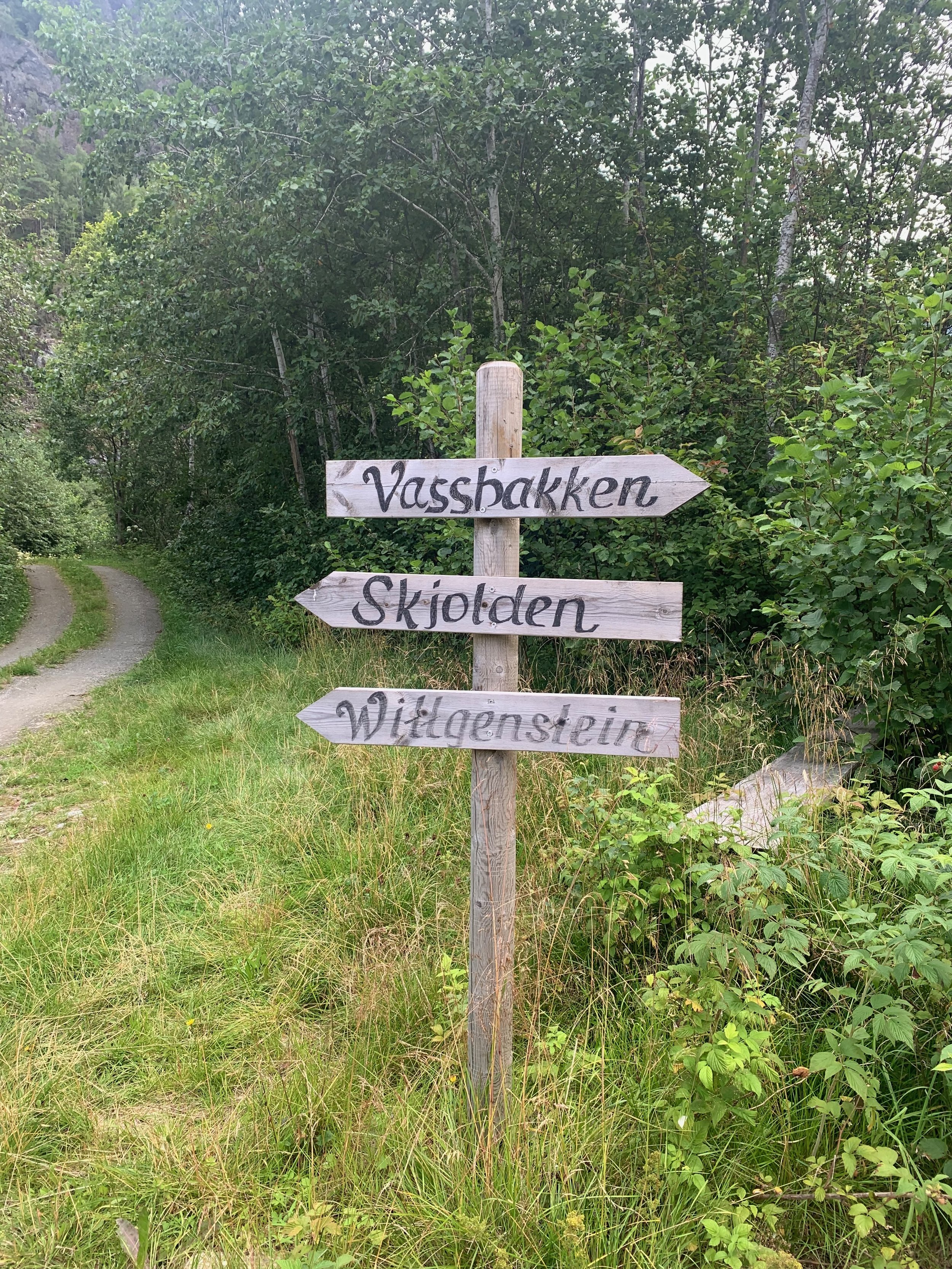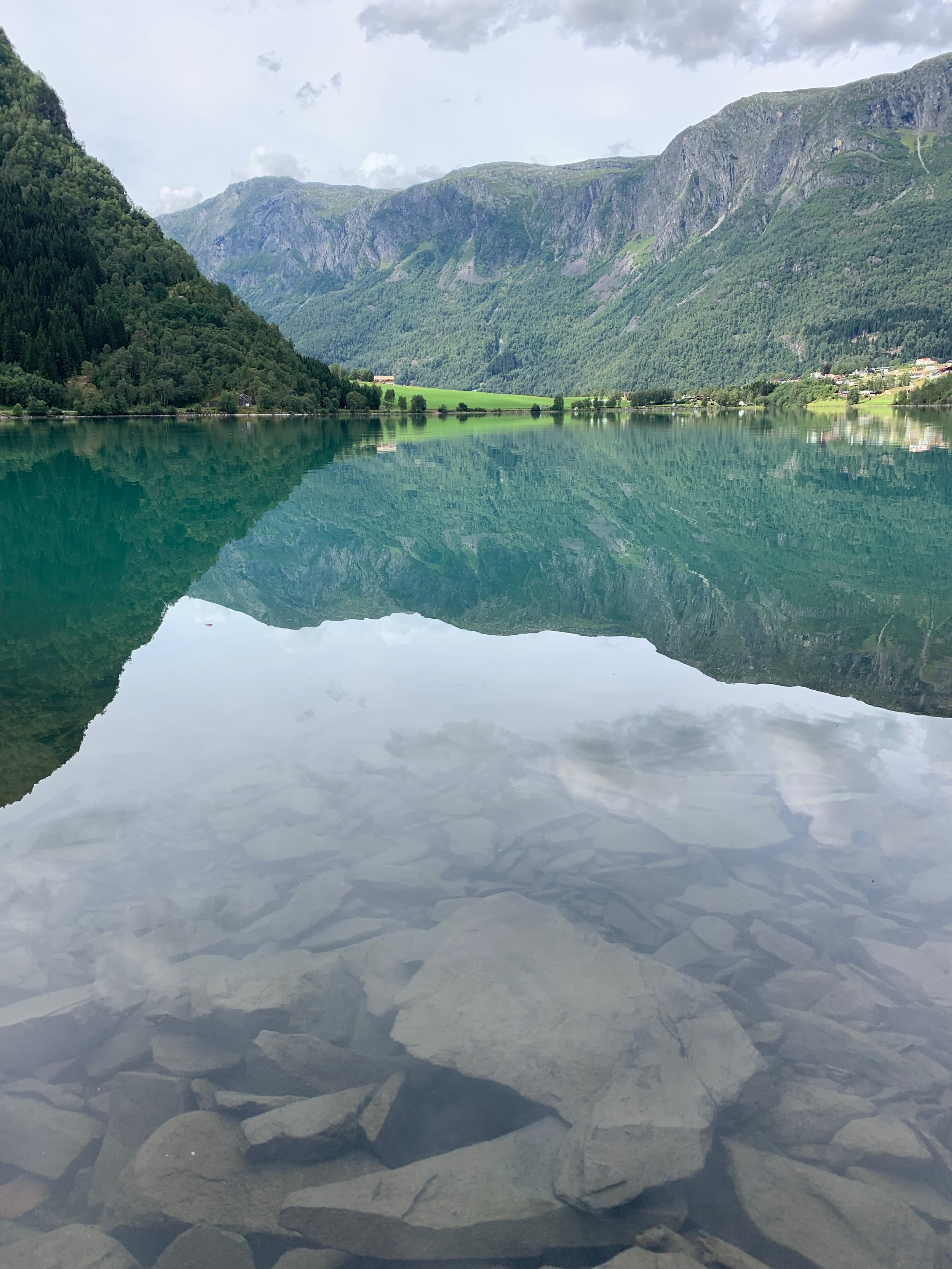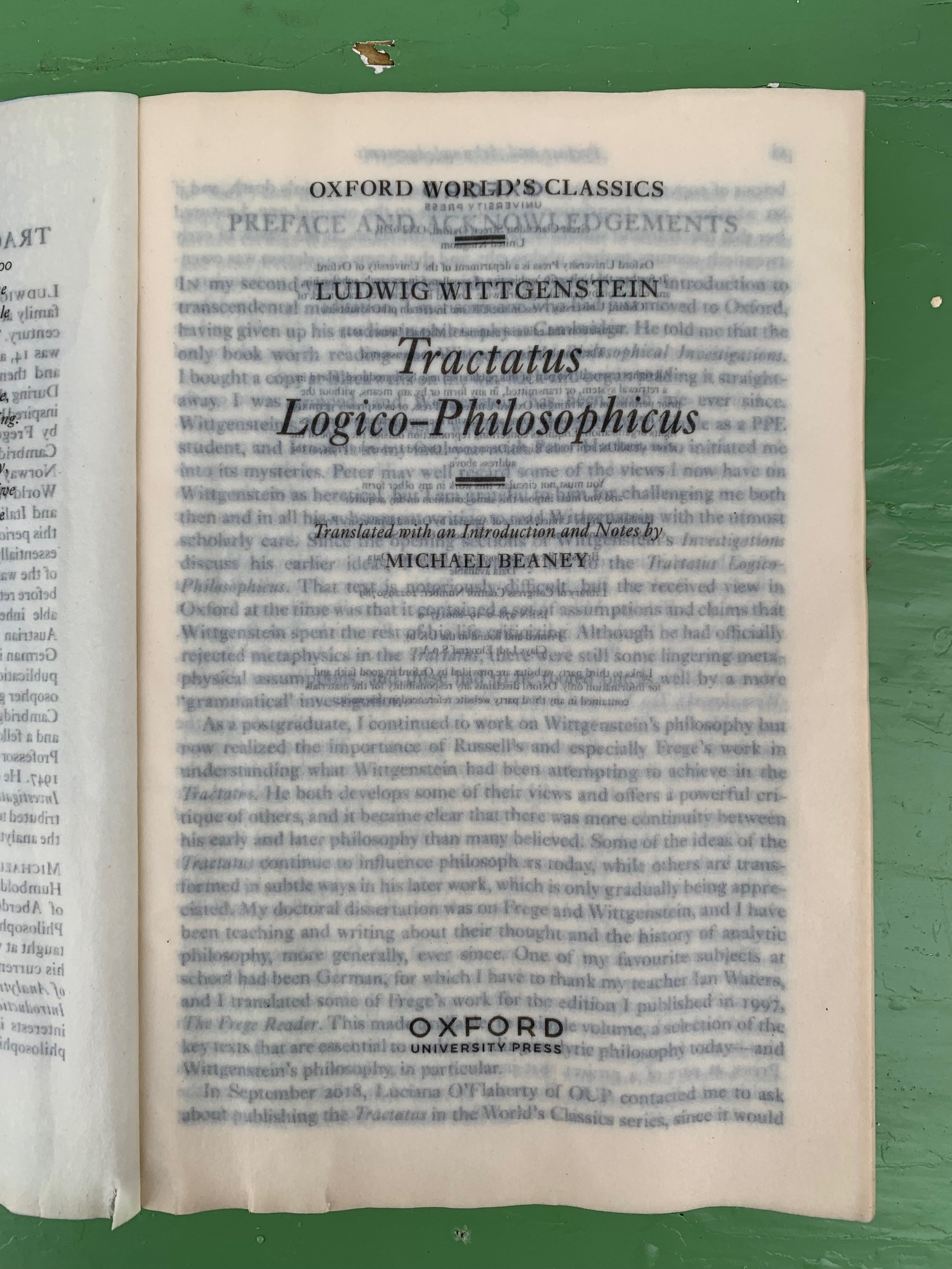In 1913, Ludwig Wittgenstein constructed his wooden hut on a steep rock face over Eidsvatnet Lake in the Luster municipality of Vestland, Norway. It was whilst living in this perched precariously home that the philosopher first began to conceive of the work that later became the Tractatus Logico-Philosophicus (1921). In the summer of 2024, Laura Potter and design researcher J C Kristensen made a pilgrimage to the hut, taking with them a copy of Wittgenstein’s book, to return it to the place of its birth. Re-baptising it, they drowned the book in the lake for seven hours, an hour for each of the seven propositions about how the world is, as described by the philosopher.
The Drowned Book is a set of three large prints of images made from a copy of Wittgenstein’s seminal work. The three prints are: a bisected image of the bottom of the drowned book, after it had been curled into a circular form, which resembles a tree slice or maybe, perhaps, the world itself; an image of individual pages of the drowned book, capturing the layering of propositions and arguments through the sodden pages, exposing the multi-layering of any claim of how the world is.
The Drowned Book was exhibited at the group show CRUD, curated by Francis Olvez-Wilshaw at Safe House 1 in Peckham, London in October 2024.







